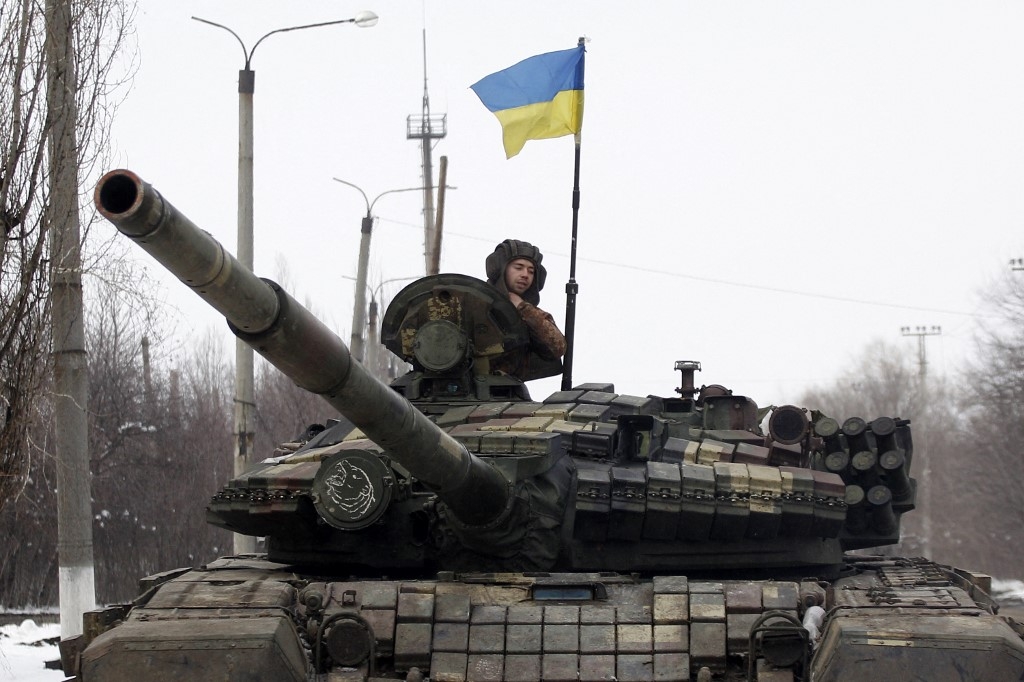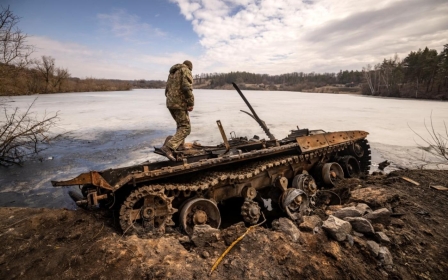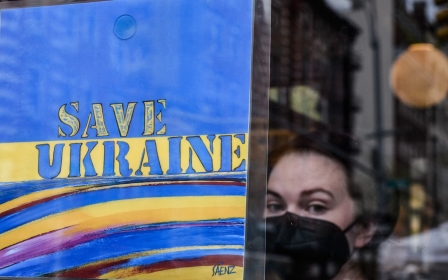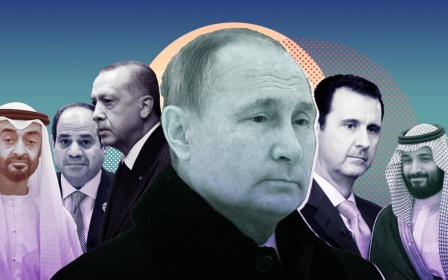Russia-Ukraine war: Will Kyiv's counteroffensive be a game changer?

On 24 February, a former senior US intelligence officer concluded: “After the air and artillery end and the ground war really starts, I think Kyiv falls in just a few days.” General Mark Milley, chairman of the US Joint Chiefs of Staff, reportedly estimated that the fall of Ukraine’s capital would take just 72 hours.
But today, six months into the war, Ukrainian armed forces have not only resisted Russia’s offensive on Kyiv, but also liberated the entire Zhytomyr, Chernihiv, and Sumi provinces as well as significant parts of Kharkiv.
Russian forces cannot stage 'referendums' to annex Ukrainian provinces when they don't have military control
Since the 2014 invasion of Crimea, western political leaders have underestimated the armed forces of Ukraine and overestimated Russia’s military might. During the Crimea invasion, both the US and Germany advised against military resistance, opting instead for sanctions and diplomacy.
Part of the reason for the inaccurate forecasting in the latest war was the intense focus on Russia’s military reforms and hybrid warfare successes, after Moscow’s embarrassing performance in Georgia. Comparatively little attention was paid to Ukrainian adaptations, innovations and achievements during and after the summer of 2014.
Since then, almost every infantry, artillery and armour brigade (with the exception of air force units) has gone through at least three special training programmes under American, British or Canadian instructors. These training courses were interrupted only by combat tours in the Donbas region, which were followed by more advanced training.
New MEE newsletter: Jerusalem Dispatch
Sign up to get the latest insights and analysis on Israel-Palestine, alongside Turkey Unpacked and other MEE newsletters
'Hell of a fight'
In 2016, I attended the anniversary of the Euromaidan revolution in Kyiv. “Welcome to Tahrir North,” a friend said in greeting. Protests at Egypt’s Tahrir Square had been annihilated years earlier, and the Orange Revolution - the older and calmer sister of Euromaidan - was about seven years older than the Arab Spring. More importantly, I was told: “Crimea won’t happen again. We will put up a hell of a fight to the last man.”
The officers and volunteers at the anniversary event were not just giving motivational speeches. Out of 14 members of the armed forces I interviewed in 2016 and forward, 11 have been killed in combat during the current war; the other three have been wounded.
By May 2019, Ukraine’s military preparations had slowed to a near halt, presenting another chance for diplomacy after the de facto failure of the Minsk agreements. Yet, while this presented a delay, it did not mark the death of Ukraine’s force preparedness.
By this past February, according to a Ukrainian officer I spoke with, a reservist platoon of 27 soldiers in Kyiv Oblast had been trained and equipped with 11 anti-tank guided missiles, including American Javelins and British NLAWs; in other words, they were armed to the teeth.
Thus, a reserve platoon - comprising part-time soldiers who worked civilian jobs in the mornings - was trained and equipped to resist a company-sized Russian armoured column. The battle of Hostomel partly reflects these years of training and equipping, even amid a shock-and-awe campaign: Ukraine’s reservists in Kyiv Oblast were able to repel Russia’s elite airborne commandos. Overall, the first phase of the war (February-April) ended with a strategic defeat for Russian President Vladimir Putin’s forces.
The war’s second phase (April-July) looked, at times, closer to a stalemate than a blitzkrieg, even as artillery duels, drone strikes and short manoeuvres continued. The major outcome was the fall of Luhansk – the only oblast to fall since March 2014. No other oblasts have completely fallen since then, making the political consolidation of Russia’s occupation highly problematic. In other words, Russian forces cannot stage “referendums” to annex Ukrainian provinces when they don’t have military control.
Controlling access
This brings us to the Ukrainian counteroffensive initiated late last month. Inevitably, Ukraine had to attempt to liberate Kherson Oblast - or parts of it - before winter, for several reasons.
Firstly, the scenario of political consolidation through a staged referendum in Kherson, a la Crimea, has long been looming, even if Russia does not have control over the province.
Secondly, Ukraine has executed a successful strategy in the north that entails trading territory for time and attrition - a strategy that does not seem to be working in the south.
Given the amount of equipment, training and funding supplied by Ukraine’s allies, Ukrainian armed forces need to show they can reclaim territories before winter, a season that will exacerbate Europe’s energy crisis. Europe’s aims may thus change from liberation to ceasefire and a maintenance of the status quo - again, a la Crimea.
Thirdly, Kherson is geo-strategically valuable for Ukraine’s overall liberation efforts, given its proximity to Crimea. Kherson controls power and water supplies to the occupied peninsula, and it brings Ukrainian forces closer to Russian command posts and naval assets in the Black Sea. In addition, control of access to the Dnipro River from Kherson allows Ukraine to combat Russia’s maritime blockade.
It is still too early to forecast the outcome of the complex southern campaign, but Andrii Kuzmenko, Ukraine’s ambassador to Qatar, recently told me: “Our forces are striking Russian military equipment and infrastructure along the entire front. Russia’s logistical supply lines, ammunition depots and command centres [are being targeted, with the aim of] severely undermining its capacities to continue this war.”
This is the first Ukrainian combined arms offensive manoeuvre since the beginning of the war, and arguably – given its size – since Ukraine’s independence in 1991. Despite being trained almost exclusively on defensive manoeuvres, Ukrainian forces have made several advances in Kherson in the face of unevenly strong Russian lines. If Ukraine can push Russian forces back to the east bank of the Dnipro River, it could mark a game-changing moment in the war.
“Ukraine will win this war,” Kuzmenko said. “We are fighting for our freedom and our state. What are the Russians fighting for?”
The views expressed in this article belong to the author and do not necessarily reflect the editorial policy of Middle East Eye.
Middle East Eye delivers independent and unrivalled coverage and analysis of the Middle East, North Africa and beyond. To learn more about republishing this content and the associated fees, please fill out this form. More about MEE can be found here.







